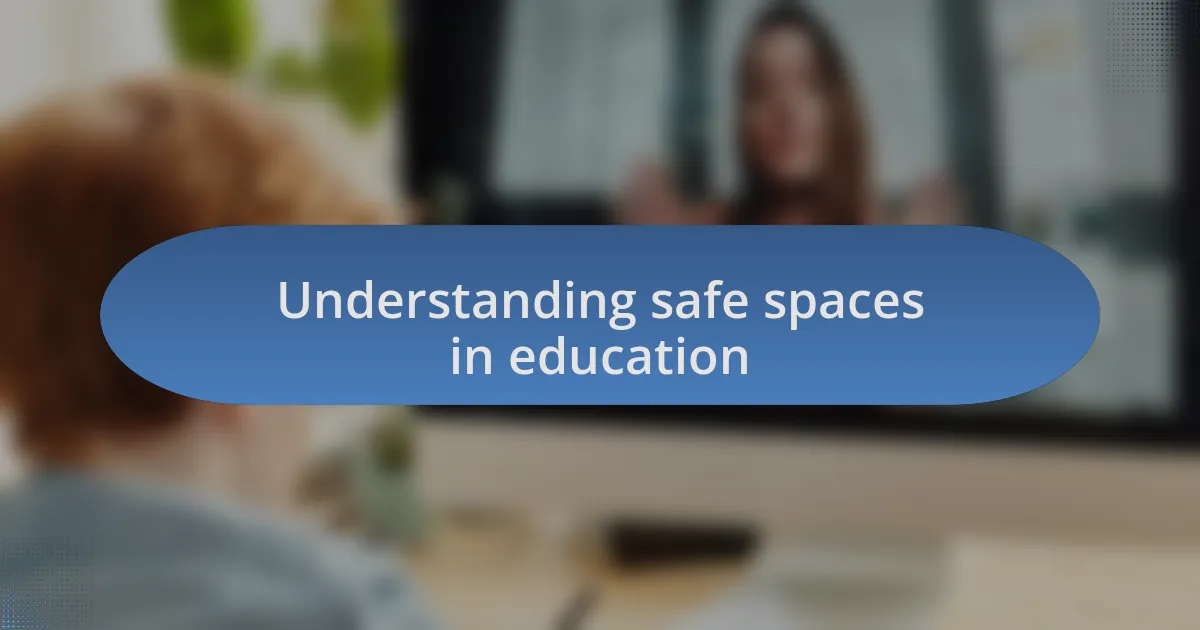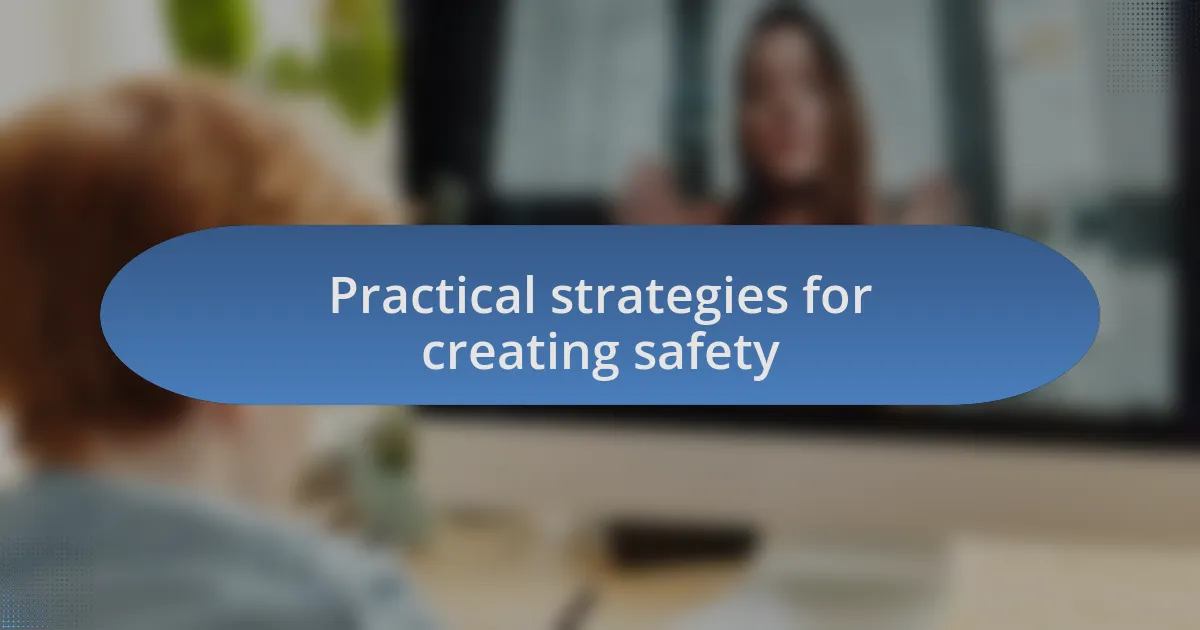Key takeaways:
- Safe spaces in education foster emotional safety and inclusivity, allowing diverse voices to be valued and heard.
- Creating clear communication ground rules and actively listening transform group dynamics, promoting a culture of respect.
- Regular check-ins and feedback enhance participants’ feelings of safety, empowering them to contribute actively.
- Implementing self-reflection, inclusive language, and opportunities for marginalized voices to lead discussions encourages deeper understanding and empathy.

Understanding safe spaces in education
Safe spaces in education play a crucial role in fostering an environment where all individuals feel valued and understood. I remember attending a workshop that focused on inclusivity, and I was struck by how participants were encouraged to share their thoughts without fear of judgment. Have you ever thought about how our shared experiences can create a bridge between diverse perspectives?
Creating a safe space means more than just physical comfort; it involves emotional safety as well. I once facilitated a group discussion on sensitive topics, and it was enlightening to witness how openness transformed reluctance into trust. How often do we consider the power of our words in shaping a nurturing environment?
When educators actively work to build these safe spaces, they cultivate a culture of learning and respect. I like to think of it as planting a garden where everyone can flourish, regardless of their background or experiences. Isn’t it essential for students to feel that their voices matter and that their contributions are valued?

Practical strategies for creating safety
One effective strategy for creating a safe space is setting clear ground rules for communication. I remember a session where we established guidelines such as active listening and mutual respect. This simple act transformed the atmosphere, encouraging everyone to share their thoughts without fear. It made me realize how a few clear expectations could promote understanding among individuals from different backgrounds.
Another practical approach is fostering an inclusive environment through diverse representation. During one project, I made it a point to include voices from various cultural and gender identities. The impact was profound; hearing different viewpoints not only broadened our discussions but also made everyone feel seen and acknowledged. Have you considered how much richer conversations become when everyone is given a seat at the table?
In my experience, regularly checking in with participants can significantly enhance feelings of safety. I implemented brief moments for feedback during a workshop, which allowed attendees to express their comfort levels and any concerns. This not only demonstrated that their feelings mattered but also created a dynamic where participants felt empowered to contribute actively. Isn’t it remarkable how small actions can build a foundation of trust and openness?

Implementing inclusivity practices
Implementing inclusivity practices starts with education about bias and privilege. In one workshop I facilitated, I introduced a short activity that had participants reflect on their identities. Seeing individuals confront their biases, often for the first time, created an emotional moment where vulnerability led to deeper understanding. Have you ever noticed how powerful self-reflection can be in encouraging empathy?
Additionally, creating opportunities for participants to lead discussions or share their expertise can be transformative. I recall an event where we invited members from underrepresented communities to present their experiences. The energy in the room shifted palpably; participants who once felt sidelined became stars. When was the last time you witnessed someone thrive because they were given a platform?
Lastly, integrating inclusive language into all communications fosters a welcoming atmosphere. In a project I was involved with, we revised emails and promotional materials, ensuring to use pronouns and terminology that respected everyone’s identity. That small shift not only made our messaging clearer but also cultivated loyalty and trust among participants. Isn’t it fascinating how thoughtful language can create such a profound impact on community sentiment?

Personal reflections on cultivating safety
Cultivating safety in educational environments is an ongoing journey that requires constant self-reflection. I remember a moment during a group discussion where I shared a personal failure in my own attempts to create a safe space. The vulnerability I displayed sparked a chain reaction; others opened up about their struggles as well, and suddenly the air was filled with mutual understanding. Have you ever felt that weight lift when you realize you’re not alone in your experiences?
There was a time when I realized that my attempts at fostering safety were falling short due to my own biases. While reviewing feedback from participants, I discovered an overwhelming concern about feeling unheard. It was a humbling experience that pushed me to reassess my approach. How often do we overlook the voices that are not chiming in, simply because we assume they feel included?
Creating psychological safety also means being open to change. During a recent event, I decided to drop my usual agenda after sensing discomfort from the group. Instead, we spent an hour having an open dialogue, and the insights revealed were mind-blowing. It made me consider: what if we all allowed ourselves to be flexible and responsive to the needs of those around us? That possibility could reshape our educational spaces entirely.